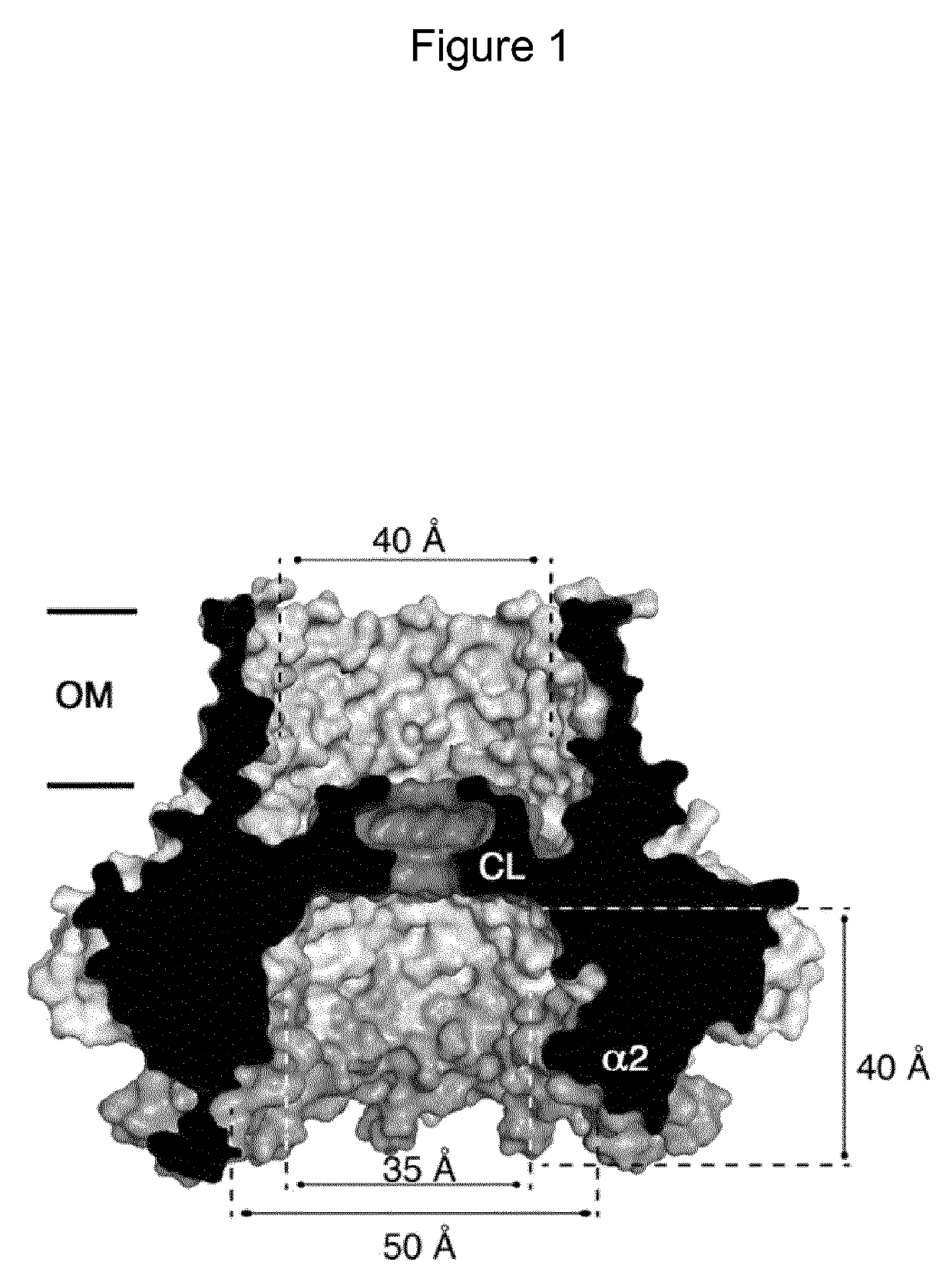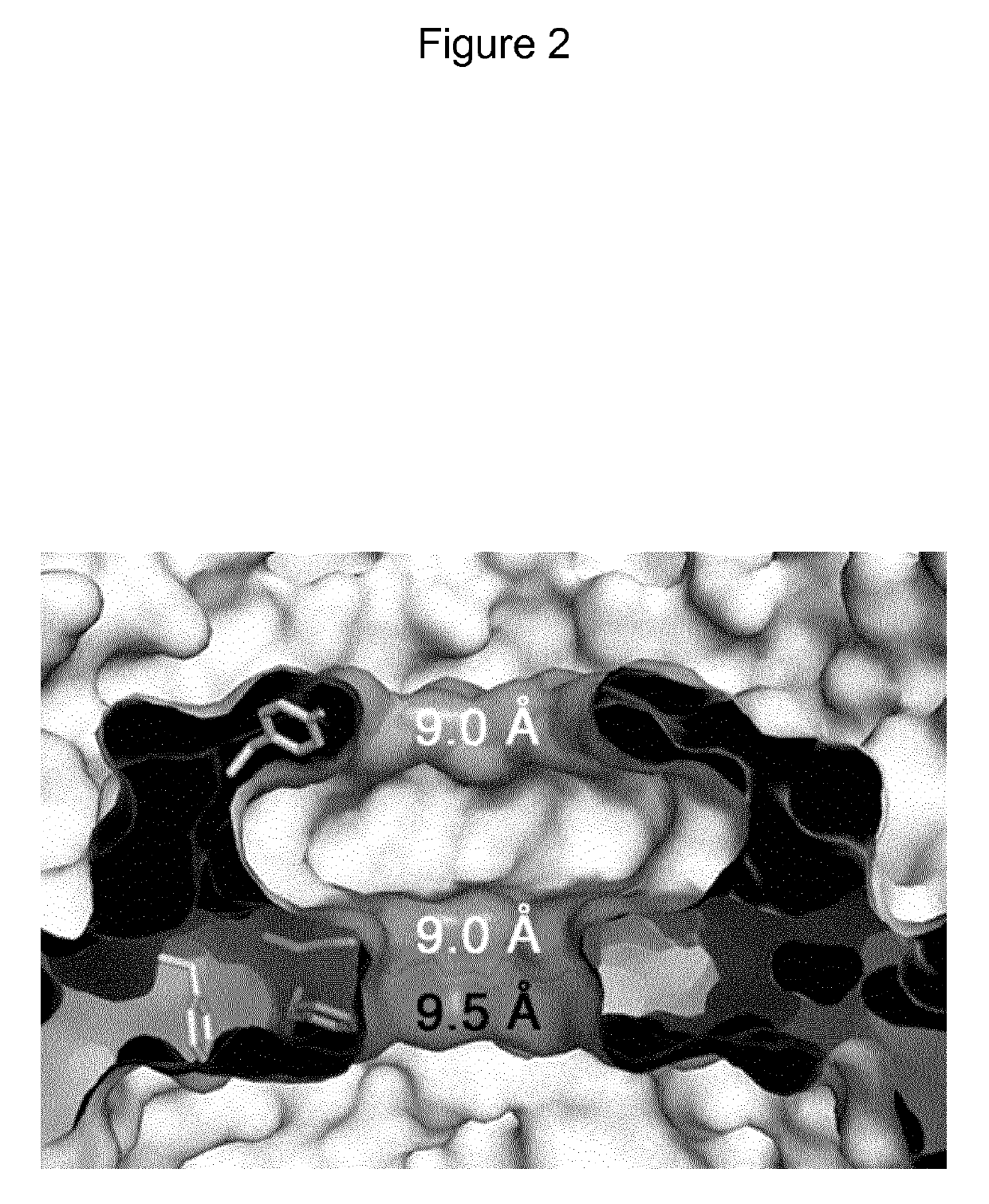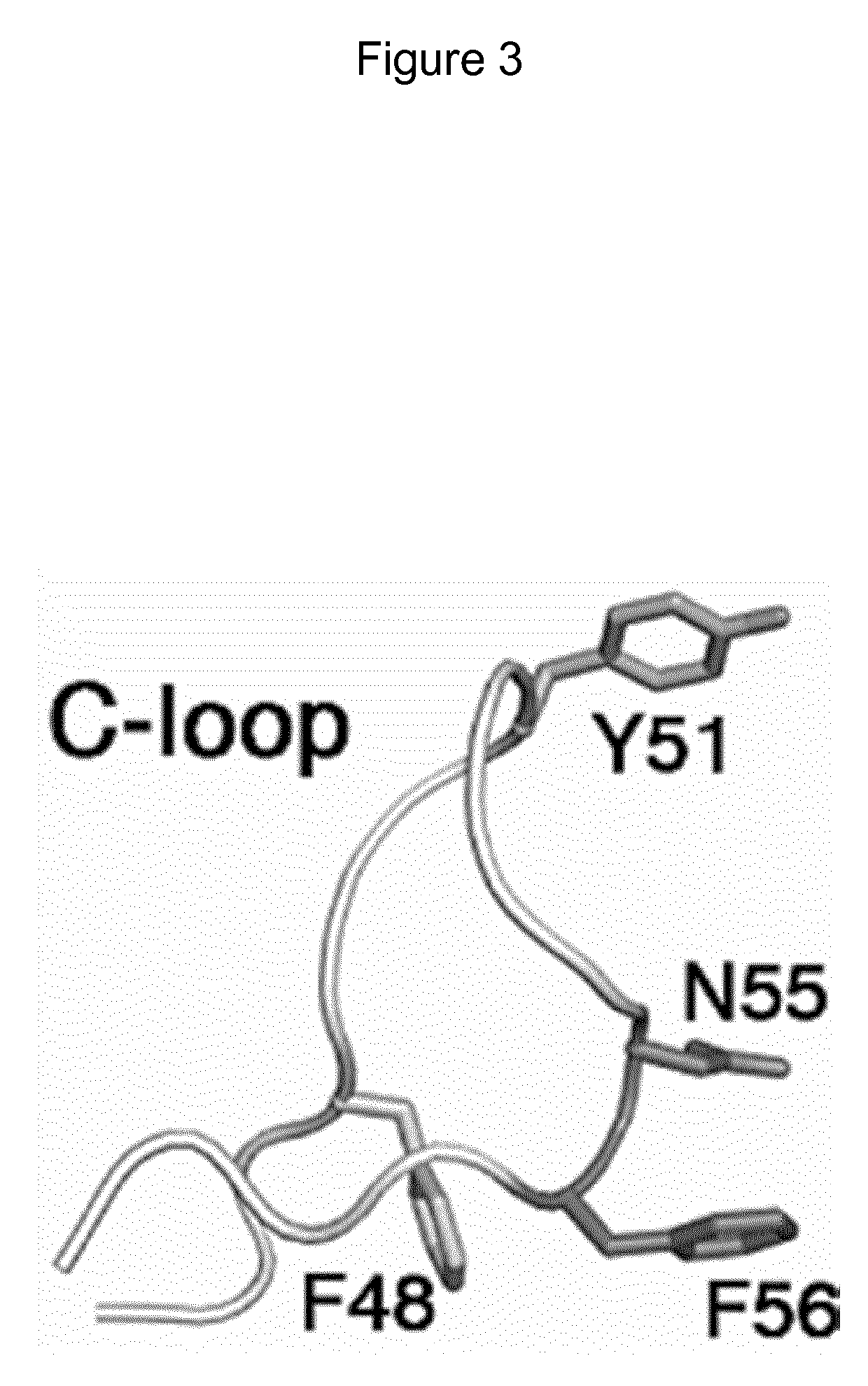Mutant CsgG pores
a csgg and csgg technology, applied in the field of new protein pores, can solve the problems of difficult direct relationship between observed current and polynucleotide, high variance of current state, slow and expensive existing technologies, etc., and achieve the effect of improving the suitability of channels
- Summary
- Abstract
- Description
- Claims
- Application Information
AI Technical Summary
Benefits of technology
Problems solved by technology
Method used
Image
Examples
example 1
nd Strains of CsgG
[0817]Expression constructs for the production of outer membrane localized C-terminally StrepII-tagged CsgG (pPG1) and periplasmic C-terminally StrepII-tagged CsgGC1S (pPG2) have been described (Goyal, P. et al, Acta Crystallogr. F. Struct. Biol. Cryst. Commun. 2013, 69, 1349-1353). For selenomethionine labelling, StrepII-tagged CsgGC1S was expressed in the cytoplasm because of increased yields. Therefore, pPG2 was altered to remove the N-terminal signal peptide using inverse PCR with primers 5′-TCT TTA AC CGC CCC GCC TAA AG-3′ (forward) (SEQ ID NO: 437) and 5′-CAT TTT TTG CCC TCG TTA TC-3′ (reverse) (pPG3) (SEQ ID NO: 438). For phenotypic assays, a csgG deletion mutant of E. coli BW25141 (E. coli NVG2) was constructed by the method described [Datsenko, K. A. et al, Proc. Natl Acad. Sci. USA 97, 6640-6645 (2000)] (with primers 5′-AAT AAC TCA ACC GAT TTT TAA GCC CCA GCT TCA TAA GGA AAA TAA TCG TGT AGG CTG GAG CTG CTT C-3′ (SEQ ID NO: 439) and 5′-CGC TTA AAC AGT AAA ...
example 2
xpression and Purification
[0818]CsgG and CsgGC1S were expressed and purified as described (Robinson, L. S., of al, Mol. Microbiol., 2006, 59, 870-881). In brief, CsgG was recombinantly produced in E. coli BL 21 (DE3) transformed with pPG1 and extracted from isolated outer membranes with the use of 1% n-dodecyl-β-D-maltoside (DDM) in buffer A (50 mM Tris-HCl pH 8.0, 500 mM NaCl, 1 mM EDTA, 1 mM dithiothreitol (DTT)). Strepli -tagged CsgG was loaded onto a 5 ml Strep-Tactin Sepharose column (Iba GmbH) and detergent -exchanged by washing with 20 column volumes of buffer A supplemented with 0.5% tetraethylene glycol monooctyl ether (C8E4; Affymetrix) and 4 mM lauryldimethylamine-N-oxide (LDAO; Affymetrix). The protein was eluted by the addition of 2.5 mM o-desthiobiotin and concentrated to 5 mg m−1 for crystallization experiments. For selenomethionine labelling, CsgGC1S was produced in the Met auxotrophic strain B834 (DE3) transformed with pPG3 and grown on M9 minimal medium supplemente...
example 3
on Olictomeric State Assessment
[0820]About 0.5 mg each of detergent-solubilized CsgG (0.5% C8E4, 4 mM LDAO) and CsgGC1S were applied to a Superdex 200 10 / 300 GL analytical gel filtration column (GE Healthcare) equilibrated with 25 mM Tris-HCl pH 8.0. 500 mM NaCl, 1 mM DTT, 4 mM LDAO and 0.5% C8E4 (CsgG) or with 25 mM Tris-HCl pH 8.0, 200 mM NaCl (CsgGC1S), and run at 0.7 ml min−1. The column elution volumes were calibrated with bovine thyroglobulin, bovine γ-globulin, chicken ovalbumin, horse myoglobulin and vitamin B12 (Bio -Rad) (FIG. 7). Membrane-extracted CsgG, 20 μg of the detergent-solubilized protein was also run on 3-10% blue native PAGE using the procedure described in Swamy, M., et al., Sci. STKE 2006, pl4, [http: / / dx.doi.org / 10.1126 / stke.3452006pl4(2006)] (FIG. 7). NativeMark (Life Technologies) unstained protein standard (7 μl) was used for molecular mass estimation. Mature CsgG is predominantly found as discrete nonarneric poreforrning particles with C9 symmetry, as wel...
PUM
 Login to View More
Login to View More Abstract
Description
Claims
Application Information
 Login to View More
Login to View More - R&D
- Intellectual Property
- Life Sciences
- Materials
- Tech Scout
- Unparalleled Data Quality
- Higher Quality Content
- 60% Fewer Hallucinations
Browse by: Latest US Patents, China's latest patents, Technical Efficacy Thesaurus, Application Domain, Technology Topic, Popular Technical Reports.
© 2025 PatSnap. All rights reserved.Legal|Privacy policy|Modern Slavery Act Transparency Statement|Sitemap|About US| Contact US: help@patsnap.com



